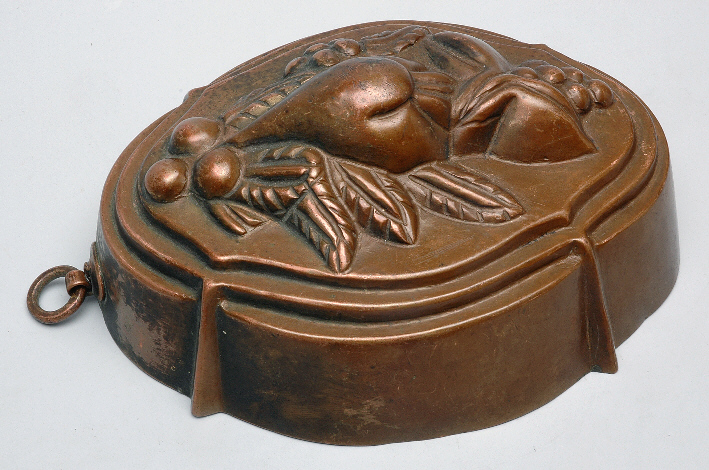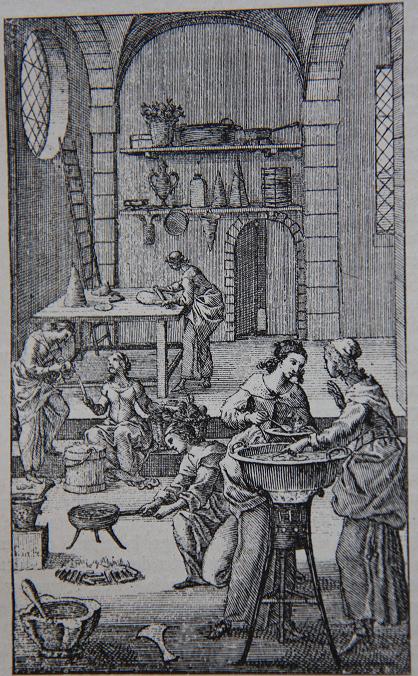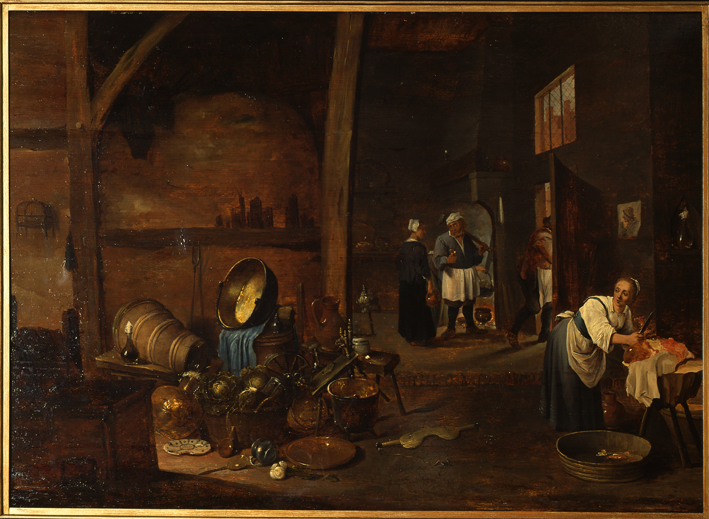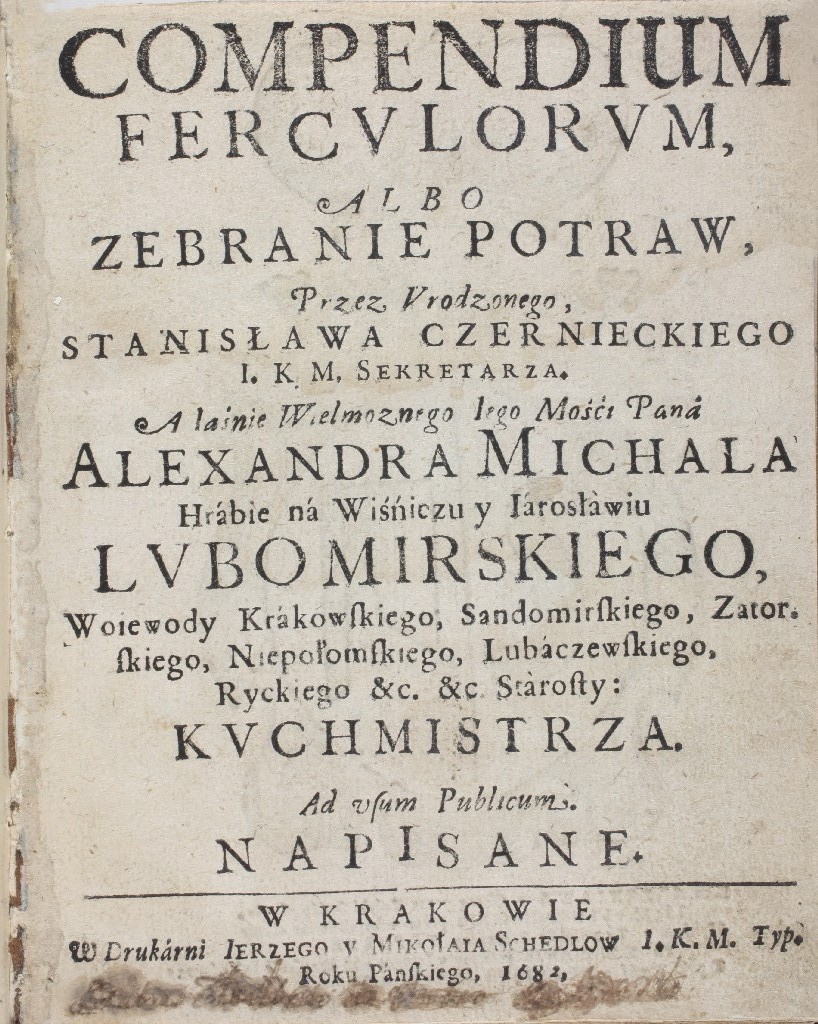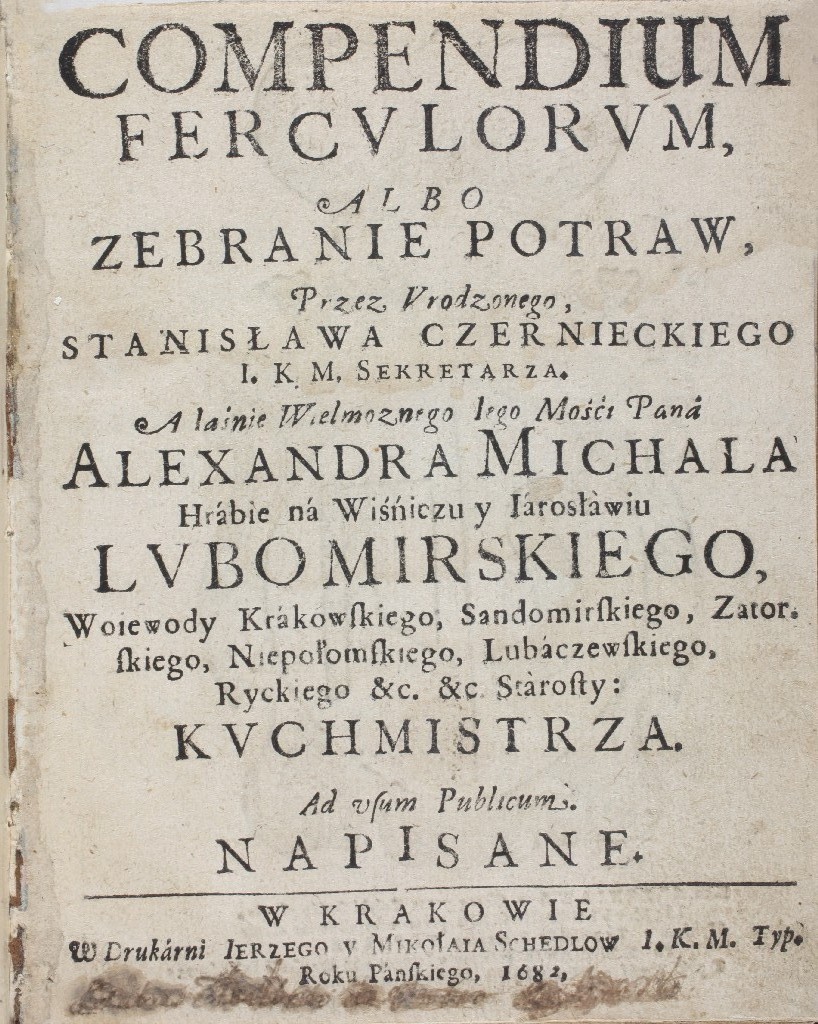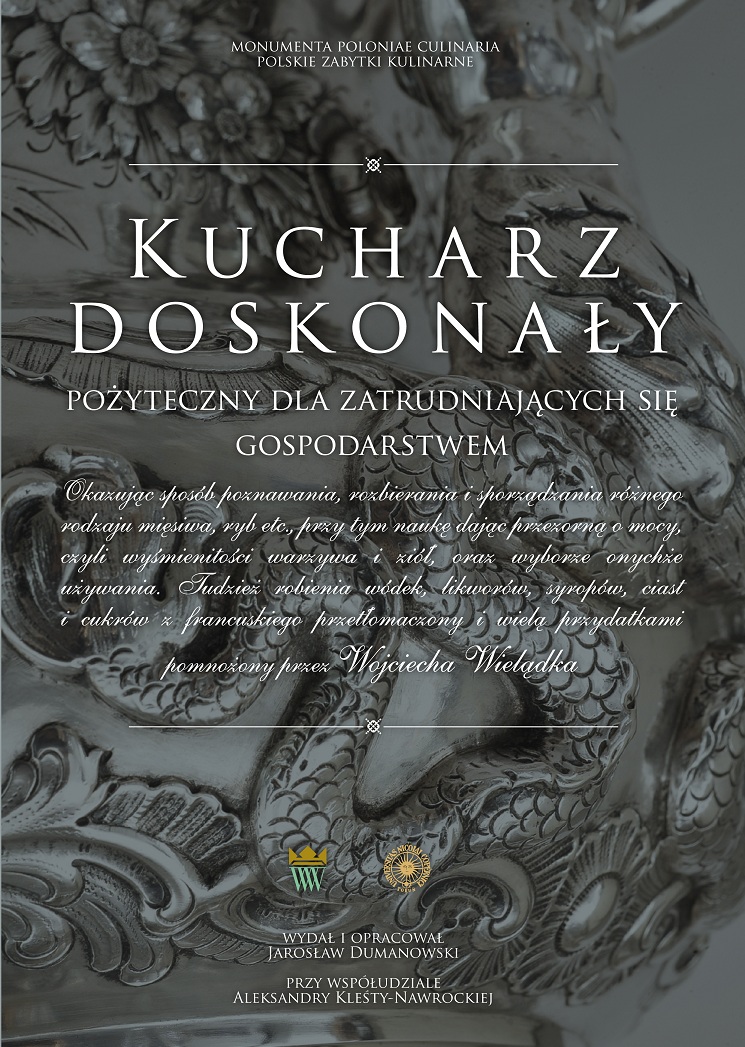"Very good fashion for frying various confectioneries"
The anonymous author of the manuscript cookbook of around 1686 devotes more attention to sweets than his contemporary Czerniecki. The same as in Compendium ferculorum, sugar is used here in recipes for various fish, meat and vegetable dishes. It is an important ingredient of meat and fish sauces. What makes it different from Czerniecki's book, is a large number of detailed recipes for sweets and desserts. The book begins with a chapter devoted to sweets, entitled: "Very good fashion for frying various confectioneries and other sweets." Later on in the book, we can find chapters devoted to "Various quince dishes," "Various tarts" (like in Czerniecki's book, these "tarts" are both sweet and salty), "Various French pastries, baked and fried," "Various gingerbread and yeast cakes" and "Various sponge cakes." By the end of the book, the systematic division into chapters gets somewhat blurred (e.g. another chapter with tarts is added) and some recipes for sweets and cakes are included in the latter part of the book, too. The entire collection includes around 150 recipes for various sweets and sweet pastries. Most of them are much more detailed and systematic than the few sweet recipes presented by Czerniecki.
The anonymous author of the collection begins the description of "confectioneries and other sweets" with various methods for preparing sugar: as aromatic powder with spices, thick syrup and aromatic and flavoured candies. These recipes reveal a great fascination with sugar. It is the main, essential ingredient of these recipes and the flavoured or aromatic additions are only supposed to diversify the highly valued taste of sweets. Accordingly, we have here a "cake" made only of sugar and ginger and "buns" whose sole ingredients are sugar and currant juice. The recipes for "ice" and "blown" sugar are instructions how to make sugar mass that is coloured with natural ingredients and used to make "various figures and persons."
Recipes for sweets usually contain sugar in the form of syrup of various thickness, mixed with different kinds of fruit, herbs and spices and processed (thickened, dried, baked). A separate, extensively described type of old-Polish sweets are various kinds of fruit in sugar. Peaches, apricots, lemons, plums, apples and cherries were either puréed and fried or dried and dipped in "liqueur," i.e. thick syrup.
The anonymous author of the collection was fascinated with sugar, sweets and desserts: fashionable and expensive novelties available only to the few lucky chosen ones.
